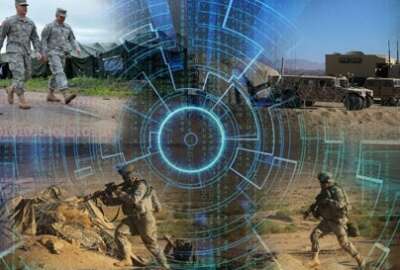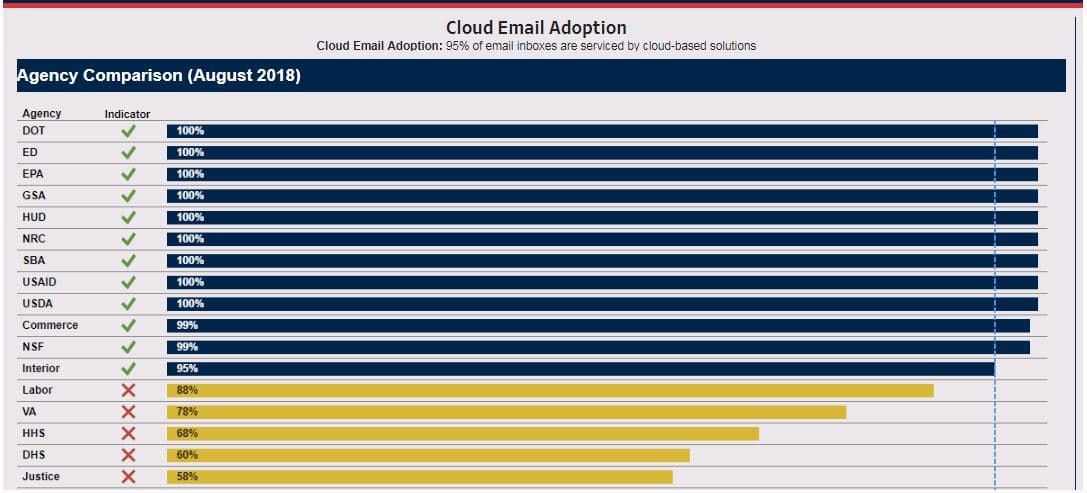
DoD’s back-office cloud initiative blazing a trail for civilian agencies
At an industry day for the Defense Enterprise Office Solution (DEOS) program, GSA and DoD officials laid out an aggressive timeline to release the solicitation ...
The Defense Department and the General Services Administration are on a fast timeline to get the $8 billion cloud contract known as DEOS out the door and awarded.
DoD and GSA told industry Monday that they should expect the request for quotes in February with an award slated for April.
Hassan Harris, contracting officer for the Defense Enterprise Office Solution (DEOS), said the final acquisition strategy still needs to be determined, but once that happens the final draft RFQ and final solicitation should follow shortly. This also means DoD and GSA are unsure whether DEOS will be single or multiple awards.
“We are looking forward to moving out. From my perspective, it takes too long to get to this point. Putting a vehicle in place for DoD, in our case, to be able access commercially available services shouldn’t be this painful, shouldn’t take this long and we will try to be as transparent as possible. While we would like to move fast, it’s not easy,” said Brian Hermann, chief of the Enterprise Services Development Division at the Defense Information Systems Agency. “Our department architecture is complicated…so we need to take into consideration what it will take to make it work. Our intent is to provide something better than we’ve ever been able to do for the DoD users.”
And it seems like the civilian sector is following closely on DoD’s heals.
Under DEOS, DoD plans to consolidate and upgrade all of its desktop and collaboration services into the commercial cloud. DoD said DEOS, unlike the Joint Enterprise Defense Initiative (JEDI) initiative, is a “fit for purpose” cloud effort that brings “best of breed commodity IT services” to meet high specialized mission requirements.
DISA recently partnered with GSA to move DEOS from a standalone contract to one that is likely to come under Schedule 70. The agencies released a request for information in October.
DEOS will replace the Defense Enterprise Email Service run by DISA and used mainly by the Army.
“The Defense enterprise email was a tremendous success. We proved out the concept of a single directory service for all of DoD. But based on the technology that was right 5-to-7 years ago, it’s harder to for us to manage the transition to new capabilities,” Hermann said. “It’s the collaborative capabilities that we are after. What we get when we start this journey is not what we have when we end it.”
OMB, GSA creating new cloud vehicle
At the same time, the Office of Management and Budget and GSA are following DoD’s efforts closely.
Margie Graves, federal deputy CIO, said OMB is encouraging agencies to develop an IT modernization roadmap for back-office, command-and-control and mission space capabilities.
“The DEOS strategy sends a demand signal and a clear message to industry regarding DoD’s, GSA’s and OMB’s commitment to maximize that buying power for the entirety of the federal government and ensure we receive the best market offerings at the best price,” Graves said. “OMB and GSA are working to put in place a federal civilian program called cloud smart email and collaboration in parallel with DEOS. DoD will be out front and bring a lot of innovation to the table, and they are further along the pathway than some of the civilian agencies. In parallel, we will be developing a similar acquisition strategy for dot-gov space that is going to leverage all of the learnings that come out of interactions that DEOS will have with industry.”
She added DoD’s experiences with DEOS will give civilian agencies the ability to adopt cloud email and collaboration tools more quickly.
“This will be complex, but when we are on the other side of this we will be so much better in terms of our service delivery in general and mission support writ large,” Graves said. “We will use this opportunity to standardize our baseline and we will make sure we move into this implementation as rapidly as we can. What we don’t want to do is be slow in adoption and then ultimately there are some other technological advances that might overtake us.”

Graves said more details are forthcoming in 2019, especially as the DEOS acquisition informs and educates the rest of the government about what is possible.
As part of the draft Cloud Smart strategy released in September, OMB set a goal for the new cloud solutions category team to recommend a set of governmentwide contract vehicles for cloud services. OMB said as agencies adopt these contracts, the government will get better prices, help agencies operate more efficiently and expand collection and sharing of governmentwide buying data leading to better-informed business decisions.
OMB continues to review the more than 40 comments it received on the draft strategy.
The cloud effort also tags back to the IT Modernization Report to the President from December 2017.
200,000 users to test DEOS
In the meantime, DoD and GSA continue to seek industry feedback and comments on the best way to approach DEOS.
Hermann said DEOS must provide DoD with a “single adaptive, automated enterprise solution for common collaboration, communications and productivity capabilities that are mission effective, secure, cost effective, ubiquitously accessible, intuitive to users and enables DoD to operate and fight worldwide.”
DEOS also must support the warfighters at the tactical edge in low bandwidth environments, streamline cybersecurity so the boundary is at the enterprise service and make data easily shared and accessed across these interoperable services.
DoD expects a phased implementation starting with about 200,000 users in an initial demonstration on the unclassified network. Then once that’s proven successful, DoD expects the vendor to bring on the remaining 2 million or so unclassified users.
Within 24 months of award, the vendors also will have to get these services approved for use on the secret network.
Hermann said the Air Force’s Pathfinder program to use commercial cloud will act as a “pathfinder” for DEOS.
“As we talk about this, this also is intended to increase our cybersecurity posture and gives us the ability to do rapid software updates. If you are familiar with our recent migration to Windows 10, it took us well over 24 months to get the entire department there,” Essye Miller, DoD’s deputy CIO, said. “Moving into a commercial based environment should give us an opportunity to do that on a regular basis, make us a bit more resilient and without interruptions to mission. So as we shape our transition, the hope that DEOS will free up talent and will free up capacity for us to refocus some things internal to the department.”
Copyright © 2024 Federal News Network. All rights reserved. This website is not intended for users located within the European Economic Area.
Jason Miller is executive editor of Federal News Network and directs news coverage on the people, policy and programs of the federal government.
Follow @jmillerWFED
Related Stories







